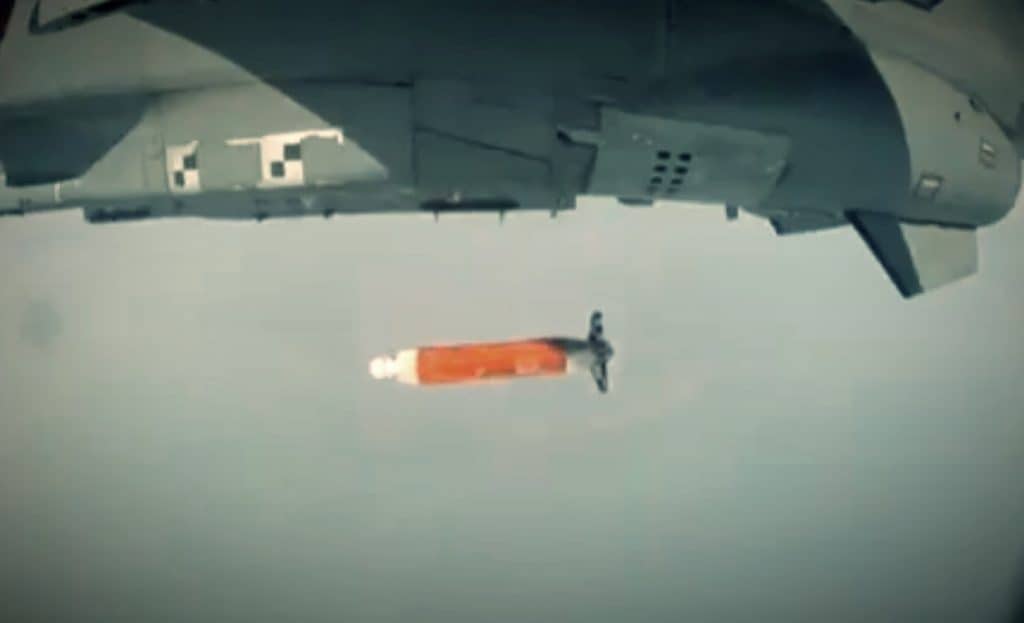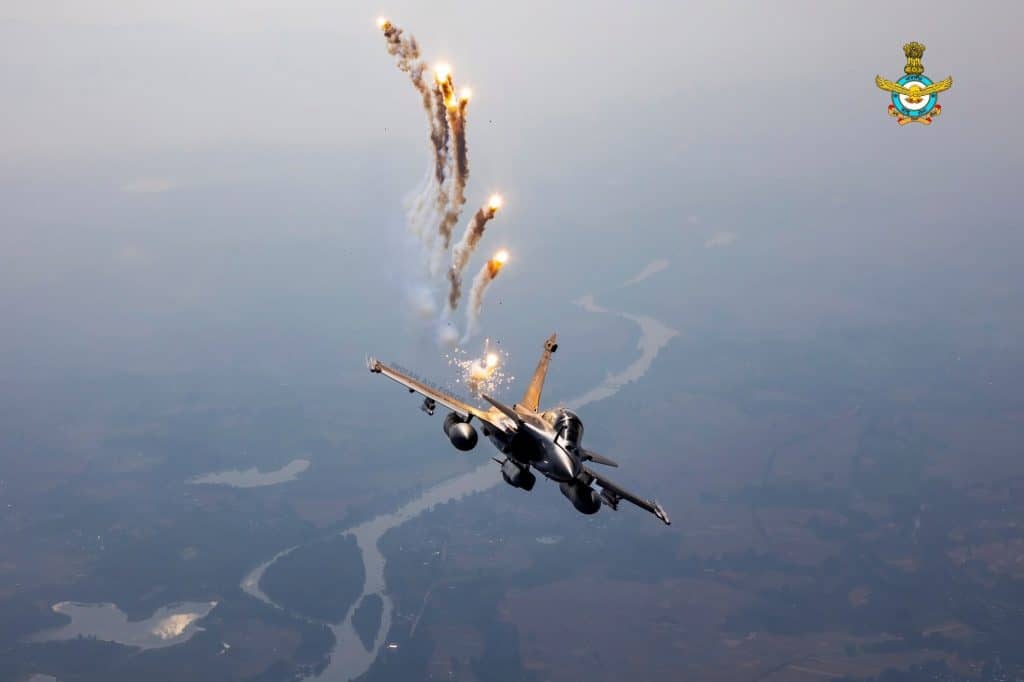
India’s indigenous precision guided smart anti-airfield weapon (SAAW) has been tested for the first time armed with a homegrown electro-optical seeker. A second flight test that happened shortly after used the satellite navigation that has been default on all tests thus far. The two tests took place at the Chandan ranges in western India’s Jaisalmer on October 28 and November 3 and are deemed to have been successful.
In a statement, the Ministry of Defence said, “Two flight tests of indigenously-developed smart anti-airfield weapon have been carried out jointly by Defence Research & Development Organisation (DRDO) and Indian Air Force (IAF). The two different configurations based on satellite navigation and electro optical sensors have been successfully tested. Electro optical seeker based flight test of this class of bomb has been conducted for the first time in the country. The electro optic sensor has been developed indigenously. Electro optical configuration of the system is equipped with Imaging Infra-Red (IIR) Seeker technology enhancing the precision strike capability of the weapon. In both the tests, the intended target was hit with high accuracy. The system is designed for a maximum range 100 kilometres. The newly adapted launcher ensured smooth release and ejection of the weapon. Advanced guidance and navigation algorithms, software performed as per the mission requirements. The telemetry and tracking systems captured all mission events throughout the flight. All the mission objectives were achieved.”
The SAAW has been tested, almost definitely only from Jaguar strike jets, since December 2016. The Indian Air Force and Indian Navy were immediately impressed with the weapon, and have been involved in testing and refining of the system ever since. The MoD cleared first orders of the SAAW in September last year, with the weapon to be integrated on the IAF’s Jaguar and Su-30 fighters and the Indian Navy’s MiG-29K jets. With ranges out to 100 km, the weapon provides military planners with a useful, homegrown, modular tactical strike system with what the possibility of at least two guidance options.
The significance of the SAAW has expanded massively since 2019 when the Indian Air Force conducted punitive air strikes on Pakistani targets in the town of Balakot. The IAF had deployed Mirage 2000s armed with SPICE 2000 and Crystal Maze prevision guided munitions for the mission, finally deploying the former to execute the intended objectives. A weapon like the SAAW provides India with a similar capability — and more importantly the possibility of tangible improvements and range extensions in the future. India’s major military standoff with China in Ladakh, and the PLA’s ramping up of military air infrastructure in Tibet and Xinjiang have compelled the Indian military to accelerate the addition of precision strike weaponry.
State-owned Hindustan Aeronautics Ltd (HAL) which had dabbled with the idea of deploying the SAAW off its souped up version of the BAE Hawk trainer, designated Hawk-i finally carried out such a test in January this year off India’s east coast. You can read Livefist’s detailed 2019 report on that here, which first scooped these plans:
Strike weaponry is clearly a focus area for the Indian Air Force. Not directly connected to the India-China standoff in Ladakh itself, the IAF separately received Rafales last year armed with their SCALP cruise missiles, the most capable strike weapon now in inventory. Last month, the IAF showed off its Rafales armed with their SCALPs for the first time:

Five days ago, the Indian Air Force and DRDO also test-launched a separate laser-guided munition designated the Long Range Bomb (LRB), which reports have described as weapon system capable of delivering a 1,000 kilogram warhead, nearly 9 times the warhead size depoyed by the SAAW. No images or other details of the LRB have been released by the DRDO or MoD thus far, though it is clear that the test was undertaken from a Su-30 MKI fighter over the east coast.
A year ago, just months after the standoff with China began, the IAF conducted a crucial development test of the Rudram-1, a new generation anti-radiation missile (NGARM) off the east coast. The 150 km weapon will also arm the Su-30 MKI fleet. More on the Rudram-1 here:
